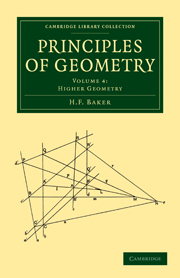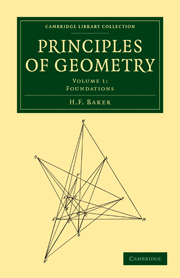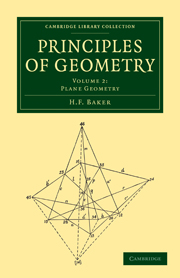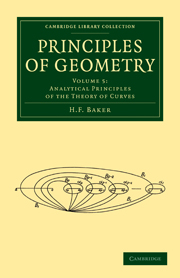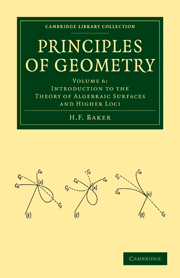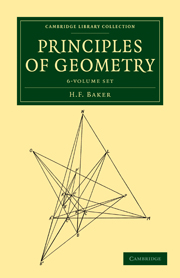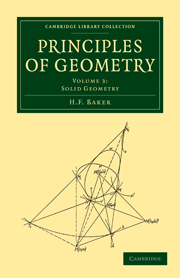Principles of Geometry
Henry Frederick Baker (1866–1956) was a renowned British mathematician specialising in algebraic geometry. He was elected a Fellow of the Royal Society in 1898 and appointed the Lowndean Professor of Astronomy and Geometry in the University of Cambridge in 1914. First published between 1922 and 1925, the six-volume Principles of Geometry was a synthesis of Baker's lecture series on geometry and was the first British work on geometry to use axiomatic methods without the use of co-ordinates. The first four volumes describe the projective geometry of space of between two and five dimensions, with the last two volumes reflecting Baker's later research interests in the birational theory of surfaces. The work as a whole provides a detailed insight into the geometry which was developing at the time of publication. This, the fourth volume, describes the principal configurations of space of four and five dimensions.
Product details
October 2010Paperback
9781108017800
272 pages
216 × 140 × 16 mm
0.35kg
Available
Table of Contents
- Preface
- 1. Introductory. Relations of the geometry of two, three, four and five dimensions
- 2. Hart's theorem, for circles in a plane, or for sections of a quadric
- 3. The plane quartic curve with two double points
- 4. A particular figure in space of four dimensions
- 5. A figure of fifteen lines and points, in space of four dimensions and associated loci
- 6. A quartic surface in space of four dimensions. The cyclide
- 7. Relations in space of five dimensions. Kummer's surface
- Corrections to volume 3
- Index.

